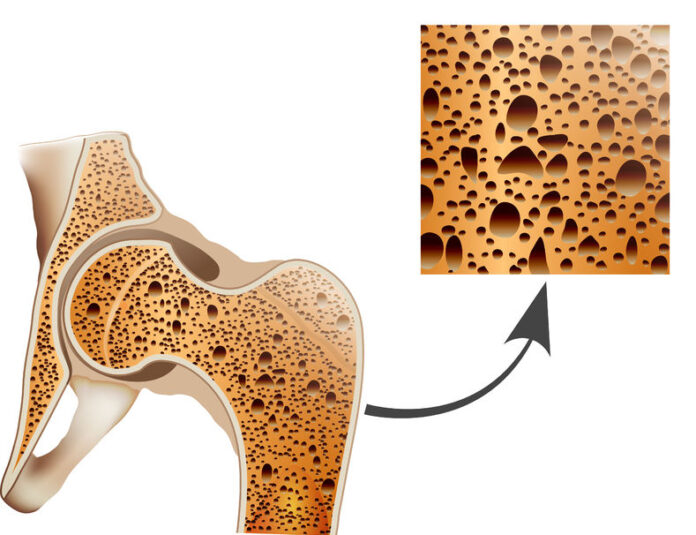
Osteoporosis is a common condition that affects millions of people around the world. It is characterized by weakened bones and an increased risk of fractures. This can make daily activities difficult, and it can impact the quality of life. There are many ways to manage osteoporosis and lead a healthy, active lifestyle and we are here to help you with that.
What are the symptoms?

The most common symptom of osteoporosis is decreased bone mineral density (BMD). As BMD decreases, bones become weaker and more brittle, leading to an increase in fractures or breaks. Other symptoms include joint pain, poor posture, back pain, being stooped over, and curvature of the spine.
Treatment Options for Osteoporosis
Fortunately, there are treatments available to help manage the condition and reduce the risk of fractures. Here’s what you need to know about treatment options for osteoporosis.
Medications
The most common type of treatment for osteoporosis is medication. These medications work by increasing bone formation, decreasing bone resorption, or both. Common medications used to treat osteoporosis include bisphosphonates, calcitonin, hormone therapy, denosumab, and teriparatide. It’s important to consult with your doctor about which medication may be best for you.
Supplements
Certain supplements such as Vitamin D3 or Calcium may also be recommended by doctors in conjunction with other treatments for osteoporosis. Collagen is another option. This is a type of protein found in the body that helps support bones and other connective tissues. Studies have shown that collagen supplements can help improve bone mineral density and strength, making it a potential option for treating osteoporosis. Talk to your doctor before choosing collagen type for osteoporosis as some supplements can interact with other medications you’re taking or cause side effects if taken in high doses.
Nutrition and Exercise
Eating a balanced diet rich in calcium and vitamin D is key for preventing bone loss. Exercise can also help strengthen bones and prevent fractures by improving balance and coordination. Weight-bearing exercises such as walking or jogging are especially beneficial for people with osteoporosis since they help put stress on the bones which helps increase bone strength over time.
Lifestyle Changes

Making certain lifestyle changes can also help reduce the risk of fractures due to osteoporosis. Avoiding smoking and excessive alcohol consumption can help reduce bone loss while eating a healthy diet and getting regular exercise are key elements of maintaining strong bones over time. Additionally, avoiding certain activities that could increase fracture risk (such as contact sports) should also be considered when managing this condition.
Conclusion
Osteoporosis can be a difficult condition to deal with, but it is possible. Making lifestyle changes such as getting adequate calcium and vitamin D intake, engaging in weight-bearing exercise, quitting smoking, and limiting alcohol consumption are just some of the ways that you can adjust your lifestyle to manage osteoporosis. Additionally, talking to your doctor about medications or supplements may also help you take control of your health so that you can continue living an active life despite having this condition.








